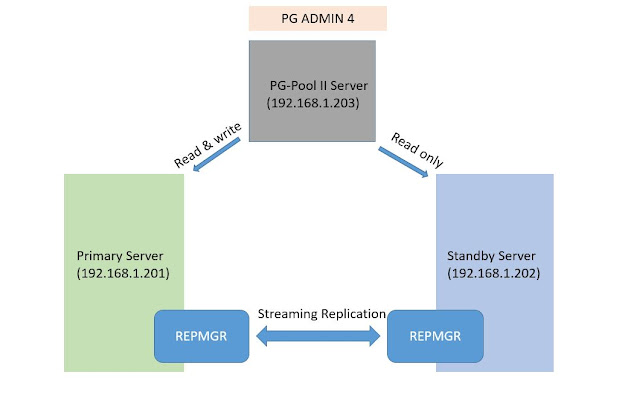PL/PGSQL case and Looping statements
PL/pgSQL CASE
Statement:
CASE
search-expression
WHEN
expression_1 [, expression_2, ...] THEN
when-statements
[
... ]
[ELSE
else-statements
]
END
CASE;
Example:
SELECT a,
CASE a WHEN 1
THEN 'one'
WHEN 2
THEN 'two'
ELSE
'other'
END
FROM test;
PL/pgSQL Loop
Statements:
PostgreSQL provides you
with three loop statements:
1.
LOOP
2.
WHILE loop
3.
FOR loop
PL/pgSQL LOOP statement:
The
LOOP statement is
also referred to as an unconditional loop statement because it executes the statements until the condition in the EXIT statement evaluates to
true. Note that the condition
specified after the WHEN keyword in
the EXIT statement is
a Boolean expression that evaluates to true or false.
Loop
statements can be nested. A
LOOP statement is
placed inside another LOOP statement is
known as a nested loop. In this case, you need to the loop label to specify
explicitly which loop you want to terminate in the EXIT statement.
Syntax:
<<label>>
LOOP
Statements;
EXIT
[<<label>>] WHEN condition;
END
LOOP;
Example:
CREATE OR REPLACE FUNCTION
fibonacci (n INTEGER)
RETURNS INTEGER AS $$
DECLARE
a INTEGER := 0 ;
i INTEGER := 0 ;
j INTEGER := 1 ;
BEGIN
IF (n < 1) THEN
RETURN 0 ;
END IF;
LOOP
EXIT WHEN a = n ;
a := a + 1 ;
SELECT j, i + j INTO
i, j ;
END LOOP ;
RETURN i ;
END ;
$$ LANGUAGE plpgsql;
PL/pgSQL WHILE loop:
The
WHILE loop statement executes a block of statements until a
condition evaluates to false. In the WHILE loop statement,
PostgreSQL evaluates the condition before executing the block of statements. If
the condition is true, the block of statements is executed until it is
evaluated to false.
The following flowchart
illustrates the WHILE loop statement.
Syntax:
[ <<label>> ]
WHILE condition LOOP
statements;
END LOOP;
Example:
CREATE OR REPLACE FUNCTION
fibonacci (n INTEGER)
RETURNS INTEGER AS $$
DECLARE
counter INTEGER := 0 ;
i INTEGER := 0 ;
j INTEGER := 1 ;
BEGIN
IF (n < 1) THEN
RETURN 0 ;
END IF;
WHILE counter <= n LOOP
counter := counter + 1 ;
SELECT j, i + j INTO
i, j ;
END LOOP ;
RETURN i ;
END ;
PL/pgSQL FOR loop statement:
The FOR
loop statement is the most complex loop statement in PostgreSQL.
Syntax:
[ <<label>> ]
FOR loop_counter IN [
REVERSE ] from.. to [ BY expression ] LOOP
statements
END LOOP [ label ];
Example:
DO $$
BEGIN
FOR a IN 1..5
LOOP
RAISE
NOTICE 'a: %', a;
END LOOP;
END; $$


Comments
Post a Comment